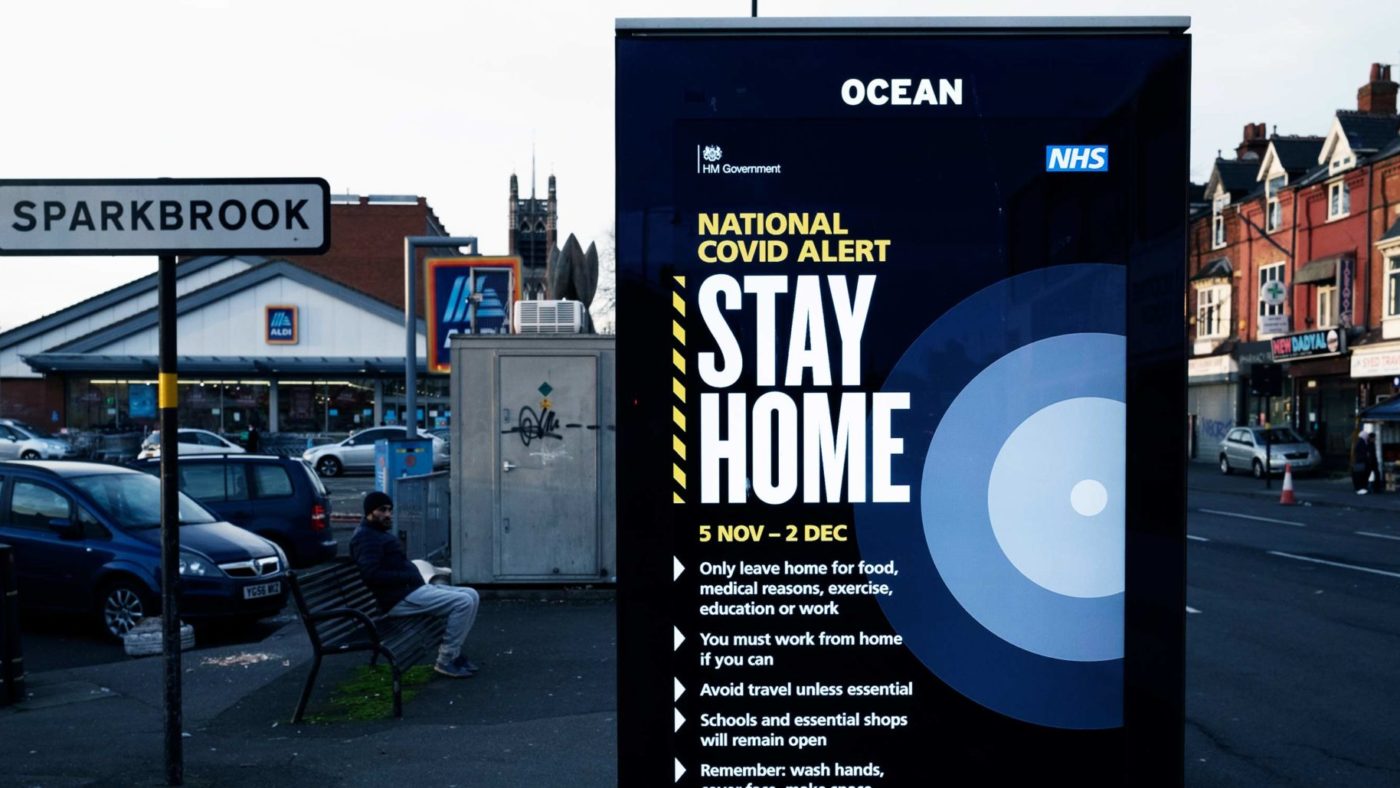We have heard it often enough: Christmas will be quite different this year, in the same way that this year has been quite different. Europe is now almost entirely locked down. Restaurants and pubs, recreational places, and retail stores are closed. Gatherings have been drastically capped to a handful of people. This is well known, of course, to over 16 million people in the UK now chafing under the most severe restrictions as we approach the end of the year.
But do lockdowns of this kind even work? It is a question that is rarely asked in the hurly-burly of panicky doom-mongering in the mainstream media and out-of-whack conspiracy theorising on the wilder fringes of the internet.
The assumption from the beginning of this crisis has been that the only appropriate response to a pandemic running out of control is to lock down – and the worse the situation gets, the more people have to be locked down. Though the precise measures may differ from country to country, and even within countries (such as in England’s tiers 3 and 4), the goal is the same: to avoid becoming another Bergamo, with overwhelmed health systems and spiralling death rates. So, what happened in northern Italy earlier this year became a near-universal response, regardless of the dimensions of the pandemic being different from country to country.
Indeed, when looking at the question of whether lockdowns work, one will quickly find that there is no clear answer. There are no past experiences to gather information from – not only that lockdowns on today’s scale have never been implemented, but governmental organisations have recommended in the past not to do so. Take the Council of Europe, which warned in 2010 not to repeat the “unjustified scare” in response to the swine flu.
When looking at Covid-19 lockdowns, the picture remains pretty opaque. A Bloomberg analysis based on the spring lockdowns showed “little correlation between the severity of a nation’s restrictions and whether it managed to curb excess fatalities”. A study published in Frontiers in Public Health in November concluded that the stringency of measures “did not appear to be linked with death rate” and further research in the UK and Germany showed that infections were already declining before lockdowns had been implemented.
In the absence of decent information about the effectiveness of lockdowns, we get different horror – or fantasy – scenarios presented in an often pedantic attempt to justify one’s pre-conceived opinion. This is true for both sides of the lockdown debate. Those in favour of lockdowns will point to countries like the US or Brazil – or US states like Florida, the Dakotas, and Tennessee – to show the grave consequences of reacting too late. Those opposed to lockdowns will point to Italy and France – or US states like New York or California – arguing that the strictest lockdowns have failed to prevent mass fatalities.
In some cases, the same country can occupy a totemic role for both sides of the debate. Sweden is a prime example of how lockdowns are not needed, argue lockdown opponents, but it is also a prime example of how we have to have lockdowns, argue lockdown proponents. While both sides instrumentalise the Nordic outlier, the fact remains that little is known beyond the fact that Sweden has had fewer restrictions than many other countries, that they are doing better so far than some countries with lockdowns and worse than others.
Similarly, lockdown-free Switzerland is currently depicted as close to Sodom and Gomorrah, a full-on war zone, in the eyes of lockdown proponents. The sceptics might ignore the national picture and point to individual cantons that fit their narrative, like “the miracle of Schwyz,” which steered clear of a lockdown despite soaring infections and and saw numbers decline nonetheless. Like Sweden, Switzerland has been doing better than some and worse than others. They will enter a lockdown today – but one much lighter than in most of Europe. Spain, meanwhile, had harsh restrictions in spring. This time around, restaurants and bars are packed and nobody seems to understand why there hasn’t been another crisis.
A generally held principle in politics is that of evidence-based policymaking, which states that policies should only be introduced if there is clear evidence, based on rigorous analysis, that they work. Many popular Covid-19 policies have already failed that test by the urge of political leaders to simply “do something,” regardless of what. For instance, EU agencies have concluded that quarantines after flying are pointless – yet they continue to exist. Germany’s Robert Koch Institut explained that only 0.5% of total infections arise in restaurants – yet the country’s restaurants were first in line for closure. The virus spreads the same regardless of which hour of the day – yet still we see night-time curfews.
More concerning still is how little many political leaders seem to care about the enormous intrusions on our hard-fought liberties entailed by these measures. It has become axiomatic that whenever infection numbers rise, restrictions must as well, with little regard to the economic costs or the misery that creates. Whether there is actual evidence that this works is not relevant. We simply have to do something – or anything.
Shop, restaurant, and hotel owners standing in front their closed businesses and financial ruin, cancer patients not being treated as fast as they otherwise would, those wanting to travel or move to another country, the 135 million people who are close to dying from hunger, and those sitting along by their Christmas tree will all think differently. They will wonder if it’s all worth it. And there will be no answer other than a threatening “if you don’t follow the rules, it’ll be Bergamo all over again”.
Click here to subscribe to our daily briefing – the best pieces from CapX and across the web.
CapX depends on the generosity of its readers. If you value what we do, please consider making a donation.


